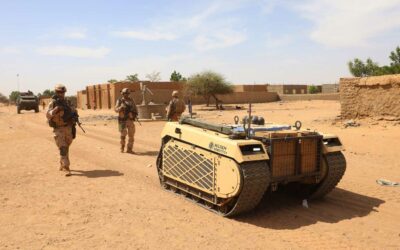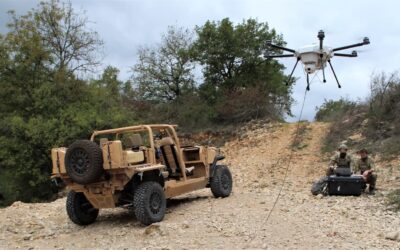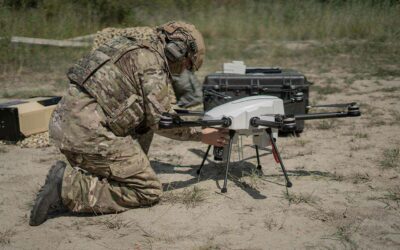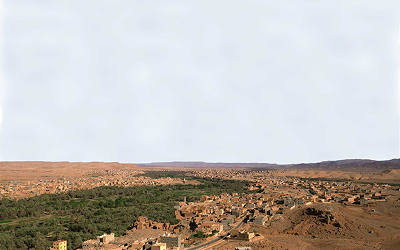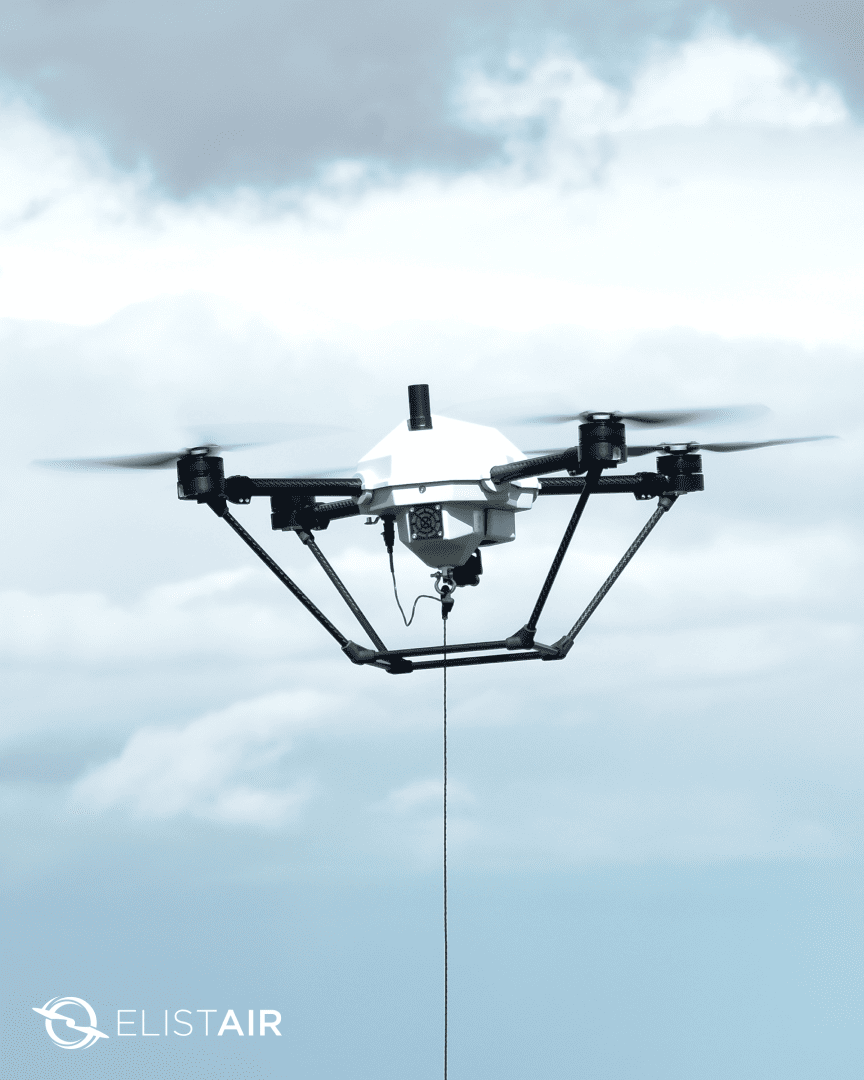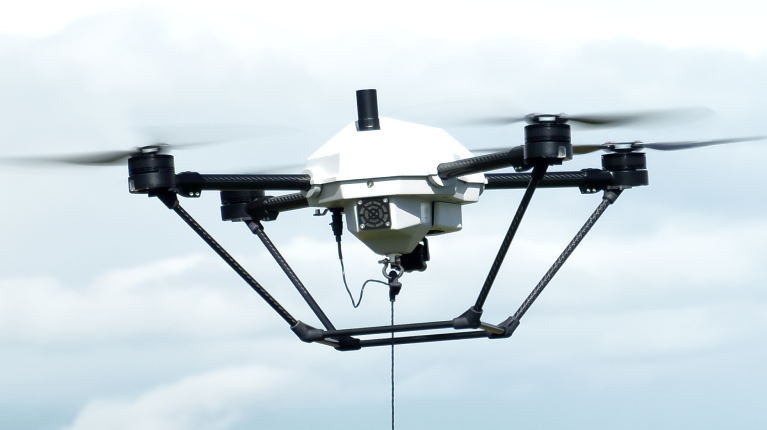The Skills Needed for Tactical Drones Sensor Operators
Elistair Team
6 minutes
The sensor operator, or drone camera operator, of tactical drones plays a key role in the mission success. They are in charge of collecting actionable intelligence that will directly affect the efficiency of the mission. Tactical drones can carry a diverse range of payloads, often requiring the expertise of a sensor operator for their operation.
This job requires technical knowledge but also methods and tactical skills to prepare, plan, understand, and follow the operation, extract actionable information, manipulate maps and geolocation information and disseminate intelligence. By providing situational awareness to the chain of command, they can be critical in the decision-making process.
Sensor Operator Mission Preparation
In the context of mission preparation with tactical drones, the sensor operator plays a crucial role in ensuring the success and effectiveness of the operation. To accomplish this, several factors demand careful consideration.
Definition of the mission objective
First and foremost, the mission goal must be clearly defined. It must outline the specific objectives that the operation seeks to achieve. Additionally, the type of mission at hand, be it reconnaissance, site protection, border surveillance, or aerial support, significantly impacts the approach and execution of the operation.
To obtain the necessary information and insights, the sensor operator needs to identify the precise data requirements. This will ensure that the collected data aligns with the mission goal.
Knowledge of the environment and cooperation with the army drone operator
Moreover, the environment in which tactical drones operate holds paramount importance. The drone camera operator must account for various environmental factors, such as luminosity levels, lights, and prevailing weather conditions. Understanding these elements enables the operator to optimize the camera’s settings and adapt them to the specific context, ensuring reliable and accurate data acquisition.
In addition, acquiring a comprehensive knowledge about the operational area is critical, including its terrain characteristics and potential threats that may arise during the mission.
We complete this work in close cooperation with the army drone operator, as it will affect the flight plan. It will guide the choice of the drone platform (fixed-wing, multirotor, tethered drone) the type of sensor, the flight plan, the sensor routines, and required personnel. The optimal arrangement is to have both the pilots and the operator working in the same location, enabling seamless communication between them.
Skills needed to operate tactical drones sensor
Operating the camera on tactical drones demands a set of tactical skills and competencies from the sensor operator. To effectively fulfill its role, the operator must comprehend the specific contribution the drone makes towards achieving the missions’ objectives. Thinking tactically and being capable of swiftly adapting to dynamic and evolving situations are essential attributes for a sensor operator.
Map and geolocation knowledge
A fundamental requirement for the drone camera operator is a solid understanding of maps and geolocation. This knowledge allows him to accurately interpret and navigate the operational environment, including areas of recent enemy activity. Furthermore, the operator should be familiar with studying patterns and identifying potential ingress and egress routes utilized by adversaries, enabling proactive and strategic decision-making.
Comprehension of tactical drones location in space and time
A comprehensive awareness of the drone’s attitude and heading in relation to the sensor’s field of view is crucial. This understanding empowers the operator to effectively monitor and adjust the camera’s positioning, ensuring optimal coverage and data acquisition. Additionally, comprehending thermal crossover phenomena enables the operator to gauge the time available before potentially losing track of a target when using an IR sensor, contributing to effective target tracking and surveillance.
Airspace communication rules
Strong radio communication skills are essential for seamless coordination and deconfliction with larger aircraft or other operational entities. The sensor operator must possess the ability to effectively communicate and maintain situational awareness within the airspace, ensuring the safe and efficient operation of the drone.
Identification and tracking capacities
Rapid identification and tracking of objects are critical skills for tactical drones camera operator. The ability to swiftly discern relevant targets from background noise or clutter facilitates timely decision-making and accurate data collection. Furthermore, the operator should be adept at gaining or retaining atmospherics in specific areas of operation, allowing them to distinguish between normal and irregular activities, enhancing situational understanding. Advances in Artificial intelligence and analytical software can reduce the cognitive burden on the drone camera operator and automate this process.
Deep knowledge of the sensor
Understanding the limitations of the sensor technology is crucial for anticipating and leveraging its focal advantages effectively. This knowledge allows the operator to optimize the sensor’s capabilities, mitigating issues such as gimbal lock and maximizing the quality and usefulness of the acquired data. Additionally, utilizing geo-referencing techniques enables the operator to precisely pinpoint targets and other points of interest, enhancing the overall accuracy and effectiveness of the surveillance mission.
Resistance to pressure
A drone camera operator must be able to work under pressure. Indeed, critical situations may offer only one opportunity to capture essential intelligence. Realistic and efficient training is therefore essential to prepare operators for such high-stress scenarios. By simulating realistic mission conditions and providing comprehensive training, sensor operators can develop the necessary skills, confidence, and situational awareness to perform their duties effectively.
Communication within the unit
The effectiveness of the skills and preparation mentioned earlier relies heavily on seamless communication from the drone team with the chain of command and other operational players.
To facilitate smooth communication, it is imperative to establish clear channels through which information can flow seamlessly between team members. This entails implementing robust software and network environments that can support real-time data exchange and enable timely decision-making. The quality of information dissemination greatly depends on the reliability and efficiency of these communication systems.
Integrating the UAV team into the mission as a cohesive unit allows the team to share information effectively and in a timely manner. This integration allows for the coordination of efforts, synchronization of actions, and enhanced situational awareness among all operational players. Effective communication ensures that the chain of command is well-informed about the progress of the mission, enabling them to make informed decisions and provide necessary guidance when needed.
“Information drives the mission”
Software and Network Environment
The effective dissemination of information by the sensor operator to ground forces relies on proper tools and technologies. In this regard, tactical drones offer significant advantages as they seamlessly interface with battle management systems or command and control centers, facilitating rapid and clear communication.
These drones serve as valuable ISR (Intelligence, Surveillance, and Reconnaissance) assets at the ground unit level, collecting actionable intelligence and disseminating it to the relevant stakeholders. Decentralized networks are increasingly employed on the battlefield to enhance the capabilities of these tactical drones, enabling efficient information sharing and coordination among various units.
Mitigate human risks of fatigue
One of the challenges that a sensor operator might face is human fatigue, particularly in prolonged operations. Tethered drones, which have the ability to remain airborne for extended periods, such as up to 50 hours, can put a considerable strain on operators, even with rotations in place.
Sustaining attention to detail and maintaining focus over such extended durations is critical but demanding. To mitigate this challenge, the integration of AI capabilities can prove invaluable. By leveraging AI for automatic detection and categorization of vehicles and people, the sensor operator’s stress and workload can be significantly reduced.
The AI system assists the operator by identifying and highlighting specific alerts generated by the software. This allows them to focus on critical information while minimizing cognitive overload.
Additionally, we highly recommend implementing standby shifts with a maximum duration of four hours for pilot and operator pairs. This arrangement allows for alternation between the two roles during these shifts.
Automated routines
Furthermore, employing an intelligence/automated surveillance drone and, or camera that is capable of performing routine and automatic patrols can yield substantial benefits. This technology not only enhances operational efficiency but also enables a reduction in the required team size. With tactical drones autonomously executing predefined routines and patrol patterns, fewer personnel are needed to operate and monitor the system. This serves as a force multiplier, optimizing resource allocation and enabling the team to focus on higher-level tasks and decision-making.
Operating the sensor on a tactical drone is an essential role that requires a unique combination of technical and tactical skills. By understanding the mission, thinking tactically, and having the ability to communicate efficiently, the sensor operator can help to ensure the success of the mission by giving efficient situational awareness.
Utilizing the right software and network environment will also help leverage data captured and give quicker intelligence to the chain of command. Time can be biggest enemy or friend on the battlefield, an effective operator can positively impact the outcome.
For more information about Elistair and its products, please visit www.elistair.com and get the latest developments on Linkedin @elistair.

